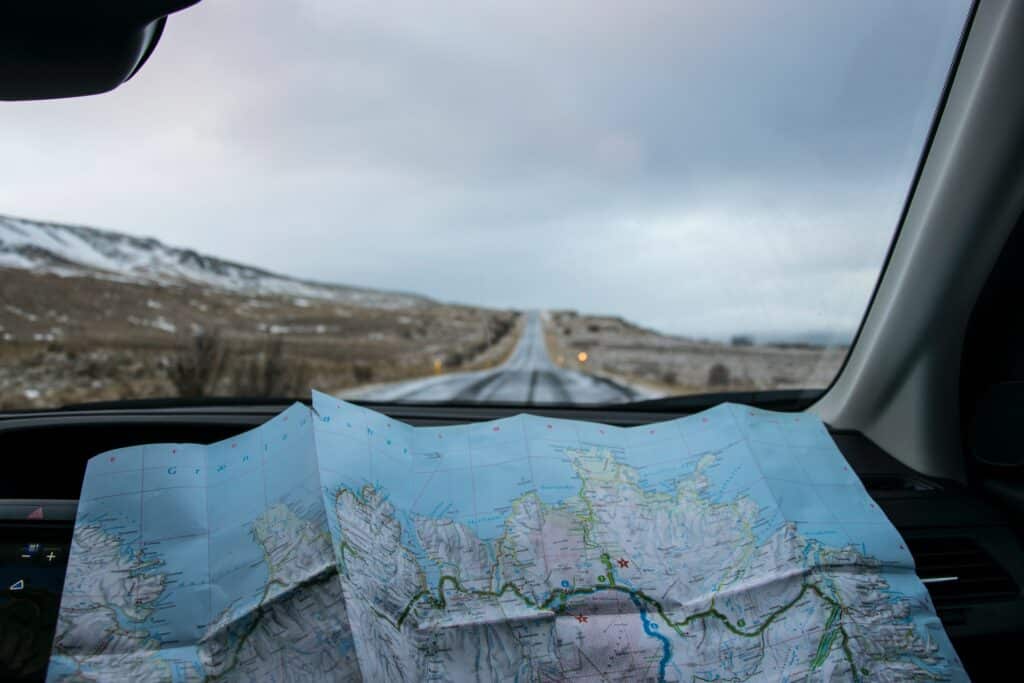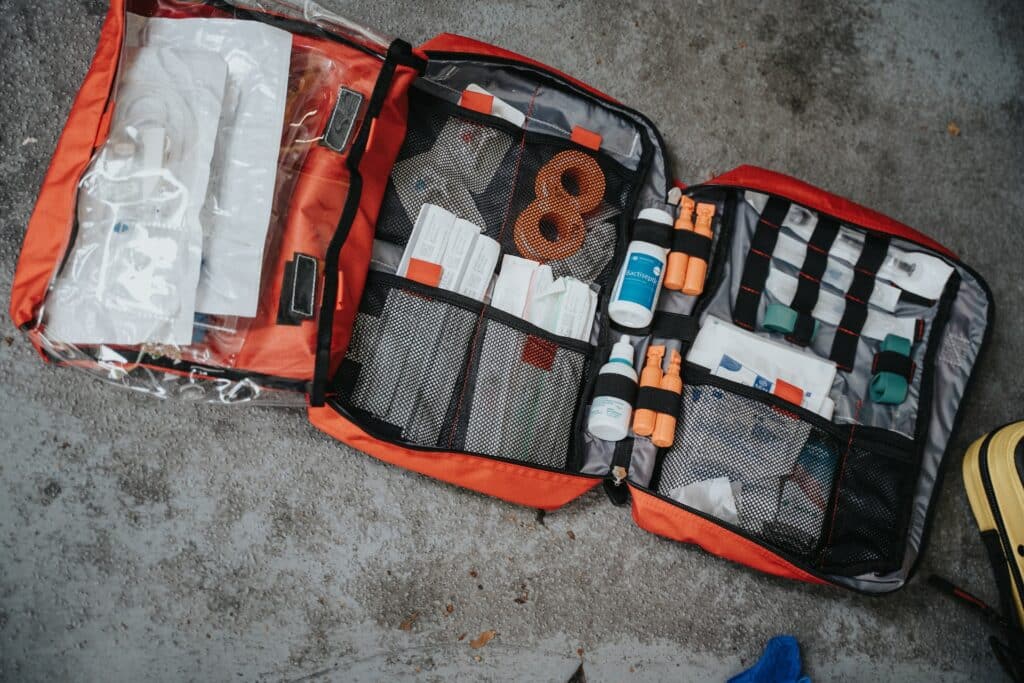The thrill of hiking is often tied to the freedom of the open trail, the panoramic vistas, and the symphony of nature. However, the success and safety of any hiking adventure also hinge on proper preparation, particularly when it comes to the gear you carry.
Central to this gear is your hiking backpack.
Beside preparing it for your trip by making sure you know how heavy it is, marking it and wrapping it for security, you need to ensure it’s in prime condition and well-equipped.
It is not just about comfort but, more importantly, about your safety.
Hiking Backpack Inspection
And here’s a comprehensive checklist for inspecting the condition and the inside of your backpack before setting out on your next journey.
Physical Backpack Inspection
The backbone of any successful hike is a reliable backpack. It’s the vessel that holds all your essentials, from navigation tools to emergency kits. Before setting out, it’s crucial to ensure that the backpack itself is in tip-top shape, as any malfunction could lead to inconvenient, if not dangerous, situations.
This means inspecting not just the contents, but the very fabric, stitches, and structures that compose the bag. A thorough physical check ensures that the pack will withstand the rigors of the trail and safeguard your gear.
Structural Integrity
- Zippers:
These are often the first to give in due to frequent use. Ensure that all zippers are functioning correctly. They should glide smoothly without snagging, and teeth should align perfectly.
It’s also a good idea to occasionally lubricate zippers to extend their lifespan.
- Seams and Stitching:
These are the lifelines holding your bag together. Check for loose threads or undone stitching, which could compromise the bag’s strength.
Reinforce any weak areas, especially at stress points like where straps meet the body of the bag.
- Buckles and Straps:
Beyond just holding your gear in place, they’re essential for weight distribution. Examine all buckles for cracks or damage. Straps should be free from excessive wear or fraying. Test all adjustment mechanisms to ensure they hold firmly.
- Material:
The fabric of the bag must resist the rough terrains and weather conditions. Look for tears, holes, or areas of thinning. Even a small tear can expand under the weight of your gear. If you spot minor damage, consider patching it up before it gets worse.
Waterproofing your pack, or ensuring it retains its waterproof qualities, will also extend its life and protect its contents.
Get inspired:
- Best Adventures in Southeast Asia: A List of Outdoor Activities
- The Best Things to Do in Alaska: Awesome Tips From a Local
- Best Hikes in the World: Europe
- The Best Places to Visit in Croatia
Weight Distribution
The way you pack your hiking backpack can make a significant difference in your overall hiking experience. Proper weight distribution is vital for maintaining balance on the trail and preventing muscle strain or injuries.
Photo by Adam Hornyak on Unsplash
- Positioning of Heavy Items:
Items like water reservoirs, food supplies, or camping gear should be positioned closer to your back, ideally around the mid-back area, which aligns with your center of gravity. This placement ensures stability and makes it easier to carry the load without unnecessary strain on your shoulders or lower back.
- Balancing Side Pockets:
Try to balance the weight in side pockets or compartments. If one side is heavier than the other, it can lead to uneven strain on your shoulders and potentially throw off your balance, especially on challenging terrains.
- Top vs. Bottom Loading:
Lighter items that you might not need access to immediately, like a change of clothes or a sleeping bag, can be packed at the bottom. Items you’ll use frequently or might need in emergencies – such as rain gear, first aid kits, or snacks – should be more accessible, packed near the top or in outer pockets.
- Utilize Compression Straps:
Most hiking backpacks come with compression straps, which help in stabilizing the load. Once you’ve packed your bag, tighten these straps to prevent the contents from shifting while you move, further ensuring an even distribution of weight.
Regularly adjusting and checking the distribution as you consume items, like food or water, can also make your journey more comfortable. Remember, the goal is to make the load feel like a part of you, minimizing sway and preventing any pressure points.
Essential Gear Check
Embarking on a hiking adventure requires more than just physical preparation; it’s crucial to ensure that you’re equipped with the right tools to safely navigate and respond to unexpected challenges.
While the natural world offers breathtaking views and serene moments, it’s equally unpredictable. That’s where your essential gear steps in, acting as your safety net and guiding star.
Navigation Tools
- Maps:
In our tech-dominated age, it might be tempting to rely solely on digital navigation tools. However, batteries die, and signals can be unreliable, especially in remote areas.

An up-to-date physical map serves as a reliable backup. Ensure that it provides detailed information about the trails, terrain, and any significant landmarks. Keep it in a waterproof bag to protect it from the elements.
- Compass:
This traditional navigation tool might seem outdated in the era of GPS devices, but a compass doesn’t require batteries or satellite reception.
When paired with a good map, it’s invaluable for determining your direction, especially in densely wooded areas or during overcast days when natural landmarks might be obscured.
- GPS Devices and Apps:
While we’ve stressed the importance of traditional navigation tools, modern GPS devices and apps can be incredibly useful. They provide real-time location data, trail information, and can even send distress signals in some advanced models.
Just ensure you have extra batteries or a power bank and that you’re familiar with their operation before heading out.
Regularly cross-referencing your digital tools with your map and compass is a good practice, ensuring you’re on the right path and increasing your confidence in navigating unfamiliar terrains.
Shelter and Warmth
When faced with the unpredictable embrace of Mother Nature, it’s crucial to have provisions that can offer shelter and warmth, potentially making the difference in emergency scenarios.
- Emergency Blanket or Bivy:
Lightweight and compact, these items reflect body heat and act as an insulating barrier against the cold. An emergency bivy, a simplified temporary shelter, can provide even more protection against wind and rain.
- Fire-starting Tools:
The ability to start a fire can be crucial for warmth, signaling, and cooking. Waterproof matches, reliable lighters, and fire starters (like magnesium fire-starting tools) should be part of your hiking essentials. For wet environments, consider carrying tinder or cotton balls soaked in petroleum jelly.
Hydration and Nutrition
The physical demands of hiking, combined with potential changes in climate, underscore the importance of staying hydrated and nourished.
- Water:
Dehydration can set in quicker than most anticipate, so carry enough water for the day’s journey. If you’re venturing into areas with freshwater sources, equip yourself with purification tablets, filters, or UV purifiers to ensure safe consumption.
- Non-perishable Snacks:
It’s not just about quelling hunger. Quick snacks like energy bars, trail mix, nuts, or jerky can offer a burst of energy, vital for maintaining stamina during prolonged hikes.
First Aid and Emergency
Every hike, no matter how brief, warrants a first aid and emergency kit tailored to the environment and potential risks.
- First Aid Kit:
Beyond the basics like bandages and antiseptics, consider including blister treatments, insect bite creams, a tick removal tool, and a compact first aid manual. Familiarize yourself with its contents and know how to use each item.

- Emergency Whistle:
In dense woods or when visibility is poor, a whistle’s piercing sound can alert rescuers or fellow hikers, outperforming even the loudest shout.
- Multi-tool or Knife:
Beyond the obvious utility, these tools can aid in first aid, emergency shelter creation, or even signaling.
Weather Preparedness
The capricious nature of weather, especially in mountainous or forested regions, demands respect and readiness.
- Rain Cover or Poncho:
Lightweight and packable, these items ensure that unexpected showers don’t dampen your spirits or your gear.
- Sun Protection:
High altitudes, open trails, or snowy terrains can intensify the sun’s effects. Protect your skin with high SPF sunscreen, wear UV protective sunglasses, and consider lightweight, long-sleeved clothing alongside a wide-brimmed hat.
Tech and Communication
In today’s interconnected world, technology has carved a niche in the realm of outdoor safety and convenience.
- Fully Charged Devices:
Beyond the primary function, smartphones often have built-in flashlights, compasses, and emergency features.
However, their utility is limited by battery life. Always start with a full charge and consider carrying solar chargers or power banks for longer excursions.
- Backup Communication:
In areas with spotty or no cell reception, satellite phones, or personal locator beacons (PLBs) can become lifesavers.
PLBs can send out a distress signal with your location to rescue agencies, even in the most remote locales. Ensure these are fully charged, and you understand their operation before embarking on your journey.
By meticulously inspecting and packing your hiking backpack, you not only set yourself up for a successful adventure but also ensure you’re prepared for the unexpected. Happy trails!



